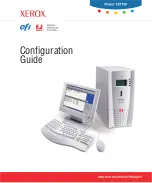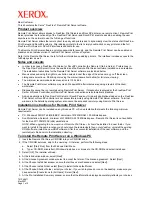
SlotServer Configuration Manual
Page 27 of 37
ProSoft Technology, Inc. is the exclusive provider of FieldServer SlotServers.
For Technical Support call +1 661.716.5100
Appendix C.3.
Dealing with ControlLogix RPI Settings
When setting up the SlotServer for ControlLogix, it is necessary to select the Request Packet Interval (RPI). The RPI
is the rate at which data is transferred to and from the SlotServer IO buffers. The following factors need to be
considered when deciding on an RPI:
Minimum RPI setting for the SlotServer is 100ms.
The Scan_Interval parameter of the two Logix Map descriptors must be faster than the RPI to ensure smooth
communications and prevent timeouts.
The number of message blocks used does not affect the RPI setting, but will affect the effective update rate
for any one message block. The effective update rate for data to/from the SlotServer’s Data Arrays to the
Logix CPU tags is the scan interval of the block since data is updated to the block every scan interval.
Increasing the number of blocks will decrease the effective update rate per block. This update rate does
not include the time taken to obtain data from the third party network, which is dependant entirely on
the third party protocol involved.
The program scan rate should be set to run faster than the RPI. We recommend twice as fast. If the ladder
program scan is slower than the RPI rate, it would be possible to miss some blocks altogether. It is further
recommended that diagnostics be added to the ladder program to detect missed blocks
The effective update rate can be calculated using the following formula:
Effective update rate (EUR) = Scan interval * (number of msg block pairs
6
)
e.g. (EUR)
=
0.2s * 1 = 0.2s
when using only one input and output block
e.g. (EUR)
=
0.2s * 25 = 5s
when using the full LonWorks Open Interface configuration.
Appendix C.4.
Rules for Naming Logix driver Data Arrays
The Logix driver attaches significance to the name of the Data Array used in the Logix Driver Map Descriptor. This
allows the user to declare a series of Data Arrays to be multiplexed through the input and output buffers of the
SlotServer. In general, Data Arrays would be named In_1 to In_x for input buffer arrays, and Out_1 to Out_y for
output buffer arrays (where x and y are numbers reflecting the maximum input and output Array numbers
respectively). For example, an application that multiplexes 6 Data Arrays worth of data through the Input buffer
would use Data Arrays named In_1 through In_6. In this example, DA_Name_Start is declared as In_1, and
DA_Count is declared as 6. If an alternative naming convention is required, the following restrictions apply:
The Data Array name must end in _x, where x is a positive integer number.
The total length of the Data Array name (including _x) must not exceed 15 characters.
No leading zeros should be used in the _x number (For example, use _5, not _05)
The “x” part of the _x in the data array name will be the number shown in offset 2 of the input buffer for the
purposes of de-multiplexing in the CPU.
There is only one Map Descriptor for linking Data Arrays to the input buffer (function Wrbc), and one for
linking Data Arrays to the output buffer (function Rdbc). It is therefore not possible to map non-
continuous Data Array number sequences. (For example, you can map numbers 5 through 25, but you
cannot map numbers 1 through 3, and then 5 through 8 at the same time).
6
a message block pair consists of an output and input block











































